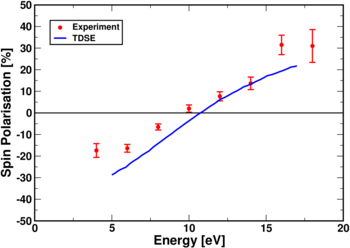As a fundamental property of the electron, spin plays a crucial role in the electronic structure of matter, from molecules and atoms to solids, determining, for example, the magnetic properties of matter. Ultra-short electron pulses are unique tools for studying materials, both their structure and dynamics, and open up a rich field of ultrafast diffraction imaging. Since electron spin is a significant variable in diffraction, ultrashort pulses of spin-polarized electrons would add a whole new dimension to the field. But where could you get such pulses?
One possibility is to use the ionization in strong laser fields. This process inherently generates electrons in ultra-short bursts. The bursts last only a small fraction of the laser period when released from the bounds of bonding potential. But would these electron bursts be spin polarized? Surprisingly, this question has never been asked until recently.
